6 Directors That Put The Same Thing In Every Film

Movie directors often have a signature tic: David Fincher will show you what's in the fridge, John Woo will show you doves in painfully slow motion, and Terrance Malick has such a powerful obsession with tall grass that he may have been a cow in a previous life. You may not have even noticed some of the more ... unusual motifs before, but after this, you'll never unsee them. You're ... welcome?
Wes Anderson Loves Maiming Characters
We've already discussed how much Wes Anderson likes to murder animals in quirky ways, but his whimsical cruelty also extends to humans. In The Royal Tenenbaums, Margot loses a finger in an adolescent misadventure, so she wears a wooden prosthetic.

Moonrise Kingdom features a bunch of aggressive boy scouts, including an aspiring pirate.

And in The Grand Budapest Hotel, henchman Willem Dafoe murders attorney Jeff Goldblum, but not before leaving him short four fingers after violently closing a door on his hand.
In a scene that we dare you not to laugh at.
In Fantastic Mr. Fox, the titular character barely escapes a band of human hunters, losing his tail to gunfire in the process.

Even Isle Of Dogs' Chief has chunks missing from his ears.

Because nothing says "charming storybook world" like cruelty and deformity.
Related: 5 'Meh' Directors Who Do One Thing Better Than Anyone Else
Paul W. S. Anderson Loves Evil Hallways
Paul W.S. Anderson will always be the lesser of the Paul Andersons, but in his defense, the man has launched multiple gigantic franchises. What's his secret to churning out sequels while the supposedly brilliant Paul Thomas Anderson has yet to make Boogie Days or The Master 2: Master And Commander? It could have something to do with his many, many evil hallways.
It all started in 1995, when the heroes of Mortal Kombat found themselves trapped in a haunted palace. To up the stakes in an already-tense setting, the tunnels were made to look extra haunted.

Two years later, and with a much bigger budget, he created surreal space hallways for Event Horizon.


And thus a tradition was born. When he directed the first of the 27 Resident Evil movies, the hallways were no longer content to merely spook the characters tromping through them, and began to attack.

Resident Evil: Retribution upped the stakes with an even more murderous hallway.

And then, because no great horror villain is ever truly dead, Resident Evil: The Final Chapter featured our heroine taking on her greatest challenge: the grittiest, grimiest, laser hallway imaginable.

In 2011, Anderson finally got to move out of schlocky sci-fi and tackle a literary classic with The Three Musketeers. The director, dutifully seizing the opportunity to stretch his wings, created an old-timey trap-filled hallway.
Of course, there was far more to the movie than just that one scene. There was also a different old-timey trap-filled hallway.

Yup, that checks out for 1625.
That bold experimentation complete, Anderson returned to space nightmares in Origin, a YouTube Premium show for which he directed two of the most hallway-centric episodes.

Say what you will about his films, but the man has dedicated his career to absolutely destroying the good reputation of innocent hallways everywhere.
Related: 5 Oddly Specific Tropes Famous Directors Slip In Every Movie
If You're A Martin Scorsese Protagonist, You Will Probably Talk To Yourself In The Mirror
Possibly the most famous scene in Martin Scorsese's long career is the "You Talkin' To Me?" monologue given by Robert De Niro to a mirror in Taxi Driver.

Back in the carefree days when a gun-laden loner trying to live out a power fantasy was still seen as a novelty.
Also quintessential is the monologue given by De Niro to a mirror in Raging Bull.
Both have been quoted, imitated, and misunderstood innumerable times, but it's not fair to boil Scorsese's incredible oeuvre down to just two scenes. He has, after all, changed the face of modern cinema ... by making many characters talk to their mirrors.
And if Leonardo DiCaprio is melting down in a Scorsese film, you'd better believe that he's doing it in front of a mirror. Howard Hughes has a sad mirror meltdown at the end of The Aviator:
Danny has a sad mirror meltdown at the start of Shutter Island:

And Jordan Belfort talks to a mirror right before going through the mother of all meltdowns in The Wolf Of Wall Street:

Some might say that it's powerful imagery: Men staring deep into their own souls, reflecting on themselves at their lowest moments, wondering what they've come to. Others would argue that the easiest way to get Robert De Niro and Leonardo DiCaprio to pay attention is to let them focus on themselves.
In Tony Scott Films, Denzel Washington Always Saves The Day On A Bridge
Tony Scott has a thing for bridges, and Denzel Washington doing things on them. It started with 2004's Man On Fire, in which Washington confronts a villain under a bridge, then turns him into the movie's title.

The film's climatic hostage exchange moves from under a bridge to its surface, with both the heroes and villains appreciating its cinematic potential.

In Deja Vu, Washington is a special agent who travels back in time to prevent a terrorist attack that blew up / will blow up a New Orleans ferry. Go ahead and guess what the ferry is near when it explodes.

Some clues are revealed during a car chase. It occurs in two different timelines, but both feature man's greatest architectural achievement: the mighty bridge.
Scott and Washington collaborated again on The Taking Of Pelham 123. The film's climax takes place on the Manhattan Bridge, where Washington finally confronts the villain he's been speaking to throughout the film, and is incredibly underwhelmed to learn that it's only John Travolta.
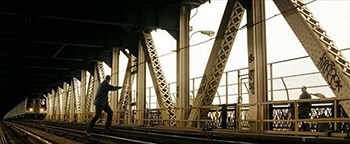
By that point, Washington had conquered all possible bridge-based challengers. And so in 2010's Unstoppable, his final collaboration with Scott, Washington's foe was a mighty train. Which traveled over a bridge.
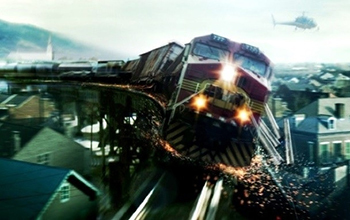
Yorgos Lanthimos Digs Disinterested Handjobs
Yorgos Lanthimos is an idiosyncratic Greek filmmaker responsible for the kind of trendy foreign films you lie about having seen at parties. He first got major attention for 2009's Dogtooth, a bizarre drama about a couple who keep their (adult) children in complete isolation from the outside world. In it, the patriarch pays a co-worker to have sex with his son. She begins by giving him a handjob with all the enthusiasm of a woman checking her tire pressure.

He later gets an equally passionless handy from his sister, and while we could tell you that it makes sense in context, that would be a lie. Next, in 2017's The Killing Of A Sacred Deer, Nicole Kidman is trying to learn a secret that she suspects her husband is hiding from her. In exchange for the info, she gives one of her husband's co-workers a clinical handjob like he's a prized farm animal that needs to produce a sample.

Then in The Favourite, Emma Stone plays a new member of Queen Anne's court. A young baron is infatuated with her, but she marries him solely for the social benefits that their union would offer. To celebrate their wedding night, she gives him a handjob that somehow makes the previous two look like intense gestures of love.

Lanthimos might be commenting on how society forces women to engage sexually, even when they're not interested, just to get what they need in life... or he might just be exploring some personal fetish for stern indifference. His movies are too weird to tell.
Michael Mann's Conflicted Tough Guys Will Gaze At The Sea
Michael Mann, the favorite director of your uncle who owns a motorcycle, has built a reputation for sophisticated crime dramas full of symbolism, social commentary, characters struggling against rotten systems, and endless shots of men staring contemplatively at water before some serious shit goes down. Mr. Thief does it in Thief:

Guy Manhunter does it in Manhunter:

In Heat, Robert De Niro briefly tires of all the heat and looks at the Pacific to lose himself in thought:

That iconic shot was inspired by the work of artist Alex Colville, a kindred spirit in Mann's love of the sea. In The Insider, both Russell Crowe and Al Pacino have to make crucial decisions, and both seek counsel from the waves.
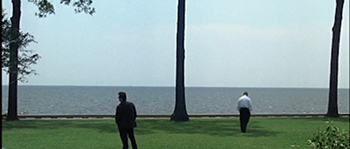
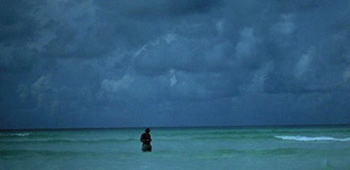
In Miami Vice, Colin Farrell's conflicted undercover cop naturally takes his moral dilemma to Poseidon. (This is why there could never be a Denver Vice.)
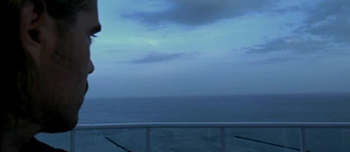
Rumor has it that the water might contain all of the answers that Mann is looking for, and when the time is right, he will vanish beneath the waves and return to his people.
For more, check out What Directors Really Think On Set - Rom.Com Extras:
Follow us on Facebook. Because we said so.





